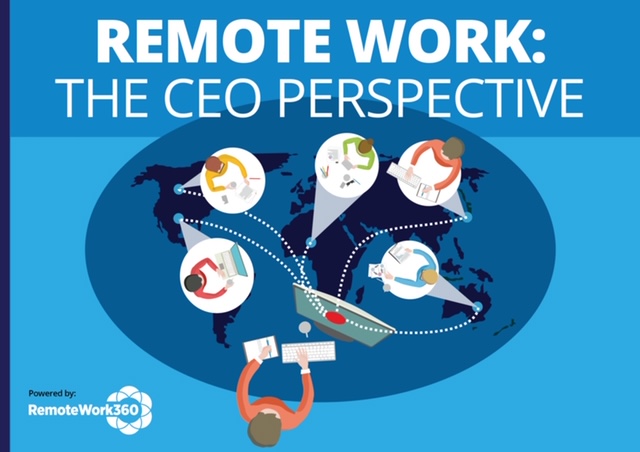If All Your Meetings Are In Person - You’re Probably Behind
- Home
- Supplier Directory
- Attendance & Monitoring
- Collaboration & Communication
- Cloud Telephony & VOIP
- Collaboration & Secure File Sharing
- Communication Software
- Creative Tools
- Culture Building
- Interactive presentations/screen sharing
- Messaging Tools
- Online Training
- Productivity
- Project Management
- Shared workspaces
- Time Tracking
- Video Conferencing
- Virtual Water Cooler
- Web Developer tools
- Finance/Accounting
- HR/Talent Management
- IT
- Managing Remote Teams
- Productivity
- Project Management
- Remote Workplace Wellness
- Sales & Marketing
- eNewsletter
- Events / Education
- About Us
- News
Collaboration & Communication
ByRemoteWork360
As more and more companies are learning, when it comes to recruiting, engagement and productivity – face-to-face office culture is highly overrated.
By Mark Fairchild, president of Exela Smart Office (SM) at Exela Technologies, a global business process automation leader.
Today’s workforce is more mobile than ever. In its 2019 “State of Remote Work” report, social media tools company Buffer found that 91% of business owners support remote work, a slight uptick from 88% in 2018. The northward trend, even before coronavirus, makes sense: companies are increasingly seeing benefits to having employees work outside the office and employees—millennials, in particular—are seeking that kind of flexibility.
With the latest talent war in full swing and unemployment at the lowest levels seen in more than a decade, utilizing current technology can help companies get access to the best workers, regardless of where they live.
Digitization Is Changing the Way Business Is Done
In addition to reaching a bigger talent pool, companies can save $10,000 per employee per year on real estate when they support full-time telework. Some studies suggest managers can get more out of teams made up of remote workers, and employees who are accustomed to telecommuting have more time to focus on work without a commute or workplace distractions.
Here are some suggestions for streamlining communication and supporting remote work:
1. Focus on daily interaction.
Only 40% of American workersthink email is an effective form of communication, even though it’s the most widely used workplace communication tool. Unfortunately, inefficient communication at work has caused 52% of professionals to feel increased stress levels and 44% to miss project deadlines. If your company hasn’t updated its means of internal daily communication, this is your next step.
Employees at companies with off-site staff, including Toggl and Chargify, attest that the most important factor in the success of a remote worker is open communication. Internal chat tools can help employees track down colleagues faster, and video conferencing platforms such as Google Hangouts allow remote workers to get important face time. Likewise, you can use Dropbox, SharePoint or Google Drive to ensure that your teams can easily and securely access and share data.
2. Take training digital.
Once your company has the digital workflows in place to allow for remote work, you need to think about how you can effectively train new employees from virtually anywhere in the world. For onboarding and employee certification and retraining, digitized training tools offer significant value.
Around 42% of Fortune 500 companies use some form of online training. Smart companies know that digital learning offers more value in less time than traditional training courses. Use instructional videos, easily shareable process documents, interactive e-books, infographics and communication platforms that make it easy to ask and answer questions in real time.
In one example, Professional Game Match Officials Limited went from having no digital learning strategy to 90% engagement on video courses among 600 trainees in the first week of implementation. The key was that courses could be accessed from anywhere and on any device. Flexibility is a hot commodity nowadays, and your digital training strategy should follow suit.
3. Manage your space.
As you further digitize your company and increase your remote workforce, the need for fixed desk assignments decreases. However, that doesn’t mean you don’t need a physical office at all. In fact, 83% of employeesprefer working in an office at least sometimes.
Managing real estate with a varying occupancy rate can be challenging, and getting it wrong can be expensive. Many companies have significantly more space than they require and struggle to accurately measure their facility needs and predict usage rates. Internet of Things sensor devices can help by providing real-time occupancy details as well as long-term analytical reports to help you manage your space more effectively. Space utilization data can do a lot to facilitate a more agile workforce.
Technological advancements are changing the way we work. As physical location becomes less relevant to business operations, digital communication and collaboration solutions will continue to grow more vital. Companies that embrace this trend will have many new opportunities to save money, attract the best talent and increase productivity overall — now and into the future.
Related Posts
An estimated 86.3% of San Francisco employees are working from home, the highest rate among 10 major ...
May 11, 2021
In the third instalment of her blog - you can catch the first, on maintaining creativity here and ...
January 22, 2021
The different “kinds” of remote: finding the right fit your business Covid-19 has turned our world ...
January 14, 2021
RemoteWork360
RemoteWork360.com is powered by Chief Executive Group, which exists to improve the performance of business leaders, build communities and strengthen society.
Latest Insights
COPYRIGHT ©2020 REMOTEWORK360. ALL RIGHTS RESERVED.



